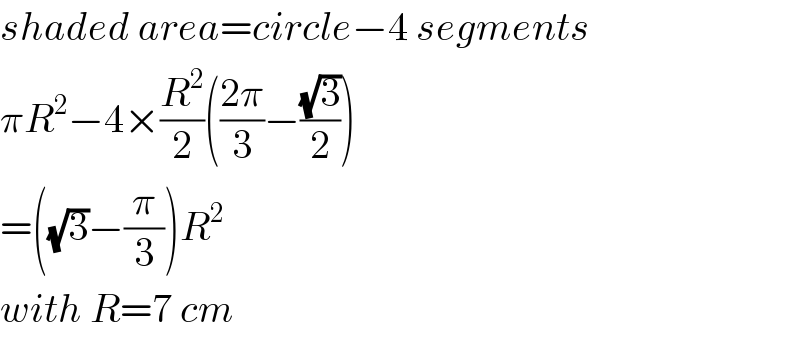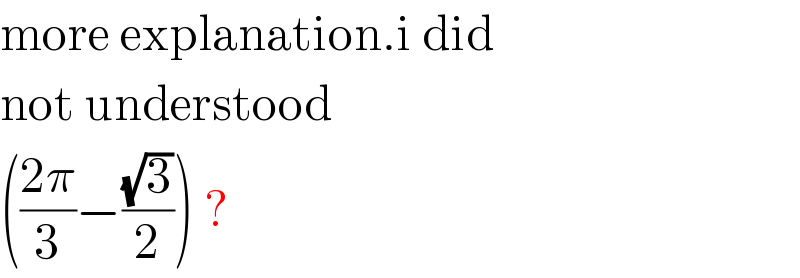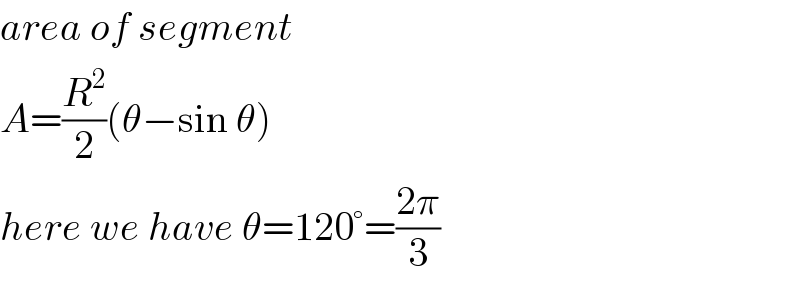
Question and Answers Forum
Question Number 118448 by peter frank last updated on 17/Oct/20

Answered by Olaf last updated on 17/Oct/20
![A = π×7^2 −2∫_(−7) ^(+7) (7−(√(49−x^2 )))dx A = 49π−4∫_0 ^(+7) (7−(√(49−x^2 )))dx A = 49π−196+28∫_0 ^(+7) ((√(1−((x/7))^2 )))dx x = 7sinθ A = 49π−196+28∫_0 ^(π/2) (cosθ)×7cosθdθ A = 49π−196+196∫_0 ^(π/2) ((1+cos2θ)/2)dθ A = 49π−196+98[θ+((sin2θ)/2)]_0 ^(π/2) A = 49π−196+98((π/2)) A = 98π−196](Q118451.png)
Commented by peter frank last updated on 17/Oct/20

Answered by mr W last updated on 18/Oct/20

Commented by peter frank last updated on 17/Oct/20

Commented by mr W last updated on 18/Oct/20

Commented by mr W last updated on 18/Oct/20

Commented by peter frank last updated on 18/Oct/20

Commented by mr W last updated on 18/Oct/20

Commented by mr W last updated on 18/Oct/20

Commented by mr W last updated on 18/Oct/20

Commented by 1549442205PVT last updated on 18/Oct/20

Commented by mr W last updated on 18/Oct/20

Commented by peter frank last updated on 18/Oct/20

Commented by peter frank last updated on 18/Oct/20

Commented by peter frank last updated on 18/Oct/20

Commented by 1549442205PVT last updated on 18/Oct/20

Commented by peter frank last updated on 18/Oct/20

Answered by 1549442205PVT last updated on 18/Oct/20

Commented by 1549442205PVT last updated on 18/Oct/20

